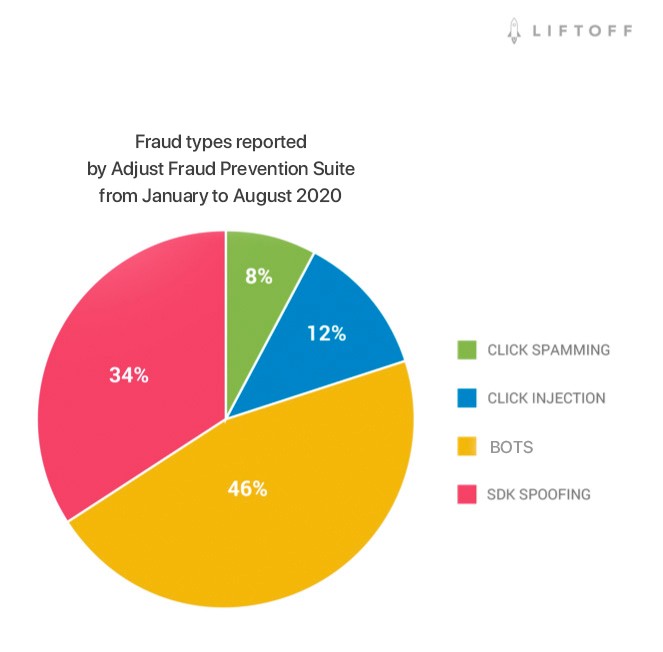Mobile Advertising and Fraud: How to Optimize the Strategy to not Lose Money?
More than 3.5 billion people worldwide own smartphones (according to 2020 data). That’s almost 45 percent of the total population and a sizable audience for mobile advertisers. Not surprisingly, global mobile advertising is projected to reach $240 billion by 2022, and more brands are investing in this sector to expand access and sales.
However, as with online advertising in general, fraud is a problem for mobile advertising. Fraud can be defined as actions aimed at stealing advertising capital. A few months ago, we published a review article on online and advertising fraud. Today we will focus specifically on mobile advertising and strategy optimization to minimize the risks of being targeted by scammers.
1. Know the risks (forewarned is forearmed)
Ad fraud is getting more complex. Understanding the risks and processes associated with fraud will allow advertisers to protect themselves.
What to do right from the start: Assess the security of partners and publishers the company plans to work with, review all agreements already in place with agencies to categorize ad fraud risks.
It is also important to fully understand which fraudulent activities can lead to failure. Below are some common methods that apply to mobile advertising.
Click flooding: This is a large number of fake clicks that impersonate the user of a mobile app or website. Scammers can initiate fake clicks on a mobile page in the background, even without visible ads. Also, spammers start clicking in the background as soon as the user interacts with the app, creating a mimic of their interaction with the ad. Unsolicited clicks are also sent from fake devices with non-existent identifiers.
Click injections: This form of scam involves spoofing a “last click” before installing the app to charge money for the conversion. At this point, the original installation of the application has already passed, but the scammers send a notification for the “last click” itself.
Fake installations: The scammers’ software imitates the user’s devices and their installations.
Ad stacking: A form of ad fraud in which multiple banners or videos are stacked on top of each other in the ad space. Only the top ad is visible to the viewer, but all advertisers are charged.
Fake traffic: Bots and automated systems disguise themselves as real users and engage in fraudulent activities.

2. Analyze the data
Preventive measures can be taken when advertising fraud methods are known. In mobile advertising, this primarily means smart data analytics. What are the indicators that something is wrong with the ad?
- If the installation time is short but the number of clicks is high, this is most likely a sign of the click injection form.
- Another alarming sign is when there are several installations at the same time, but they happen on different days. This may happen because of bots.
- Beware of multiple installations with the same device ID and operating system.
- The correspondence between the language setting and the country is also worth paying attention to. For example, if the download takes place in the Russian Federation, but the language is English.
- IP addresses also help identify ad scammers. It is suspicious if the traffic is coming from duplicate IP addresses or if the IP address of the click is different from that of the installation.
3. Limit audience volume and customize targeting
Proper targeting of mobile ads helps reduce the likelihood of fraud by narrowing the user range.
Also, overall targeting helps you get more value when launching a mobile ad campaign, as your ad will be seen by a potentially interested audience.
4. Work with ad quality
This recommendation is no longer about preventing fraud, but more about dealing with users. Most mobile users are aware that scams exist. Therefore, they may be distrustful of the ads they see on their devices.
To deal with user scepticism, it’s important to position the brand as an industry leader, make use of social proof, and establish a consistent strategy for advertising across multiple channels.
What precautions do we take at BYYD to prevent fraud?
- We monitor the quality of traffic. For us, the quality and transparency of traffic is a very important factor. The absence of erroneous traffic is ensured by two-way control: by us and by the publishers.
- We only place ads in applications that have undergone strict standardization. Developers know how difficult it is to get into an app store. For this, you need to provide a product that meets the high requirements.
- We provide transparent analytics. We show you exactly where ads are placed and how they work. Transparency is the key to customer trust.
Based on materials: clickz.com